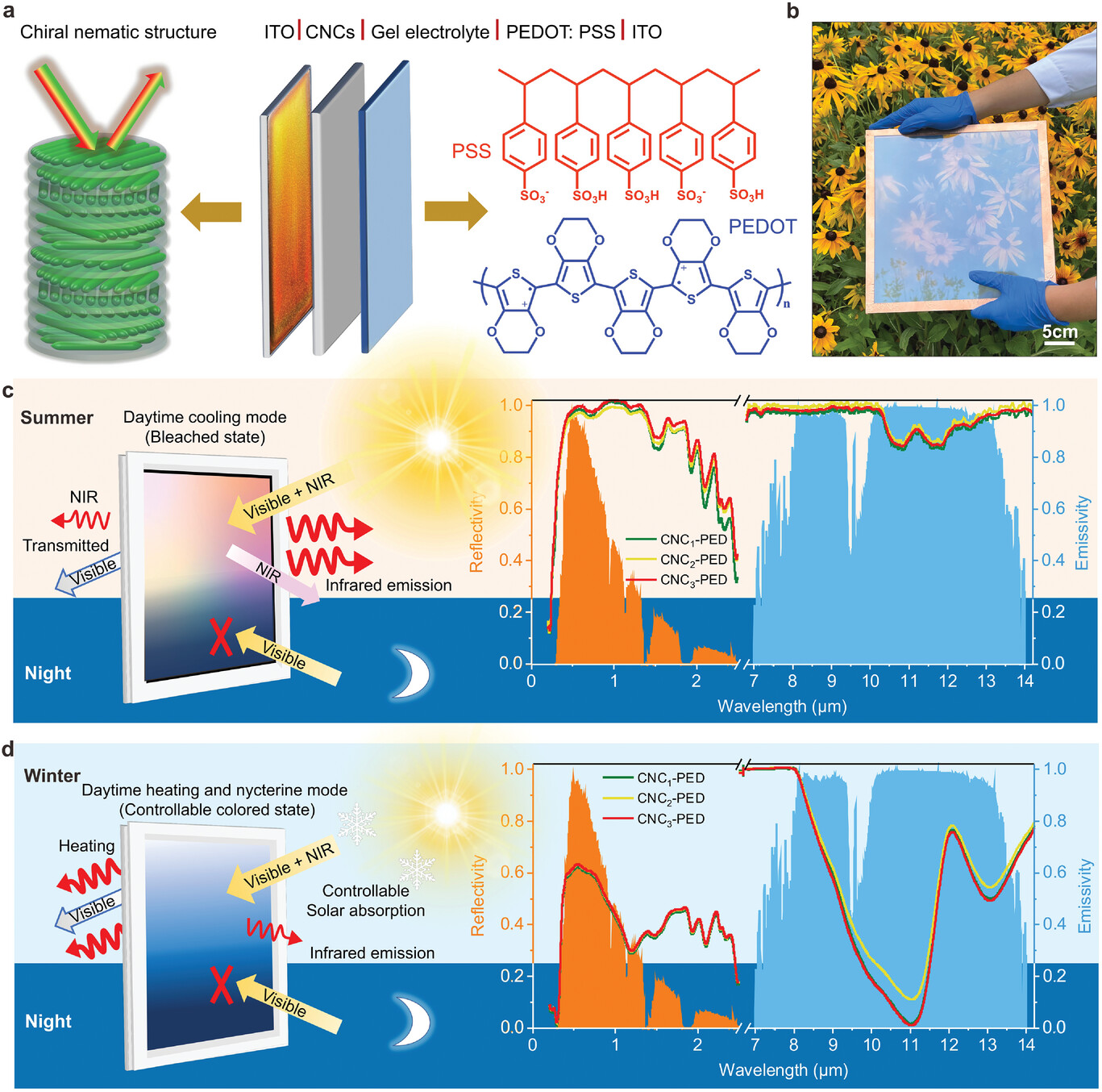Abstract
Smart windows offer a sustainable solution for energy-efficient buildings by adapting to various weather conditions. However, the challenge lies in achieving precise control over specific sunlight bands to effectively respond to complex weather changes and individual needs. Herein, a novel electrochromic smart window fabricated by integrating a self-assembled cellulose nanocrystals (CNCs) layer with an electrochromic poly(3,4-ethylenedioxythiophene):poly(styrene sulfonic acid) (PEDOT:PSS) layer is reported, which exhibits high near-infrared transmittance, low solar reflectivity (26%), and infrared emissivity (20%) in winter, and low near-infrared transmittance, high solar reflectivity (91%), and infrared emissivity (approximate to 94%) in summer. Interestingly, the material offers dynamic temperature control based on its photothermal properties, maintaining the internal temperature of buildings within a comfortable range of 20-25 degrees C from morning to night, particularly in winter with significant daily temperature fluctuations. Simulations show that the CNC-PED device demonstrates excellent energy-saving and CO2 emission reduction capacities across various global climate zones. This study presents a feasible pathway for constructing season-adaptive smart windows, making them suitable for energy-efficient buildings.

Published in SMALL;10.1002/smll.202407033


